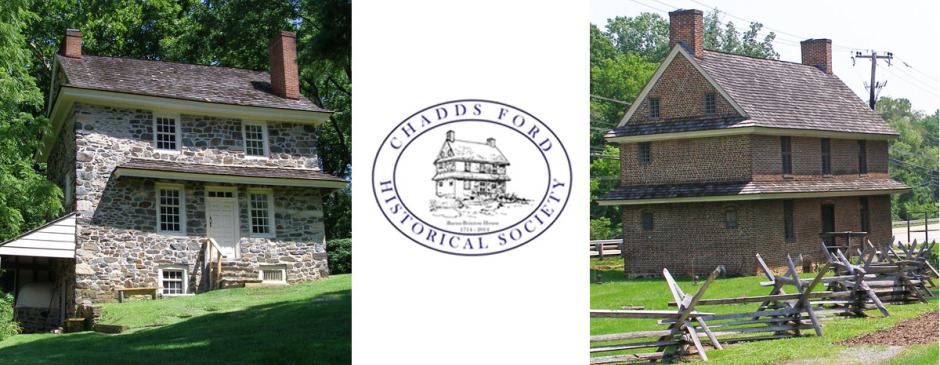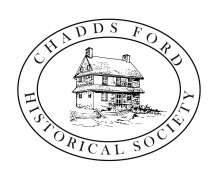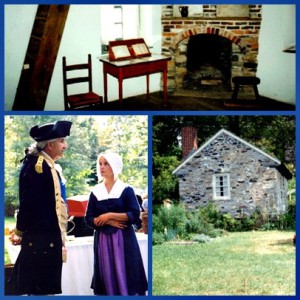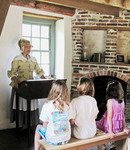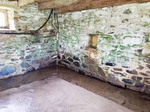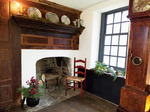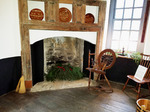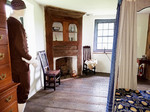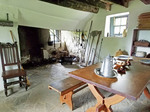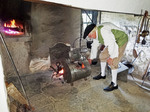John Chads House and Springhouse c. 1725
John Chads, heir to his father’s 500-acre plantation along the Brandywine, commissioned John Wyeth, Jr. (no relation to the Wyeth family of artists) to build a house on the banks of the creek. The two men probably stayed in the Springhouse and slept in its loft while the house on the hill was being built. The style and appointments of the house, as we know it today suggest moderate wealth. Its simplicity reflects Chads’ Quaker heritage.
In 1729, about four years after the house was completed, Chads married Elizabeth Richardson, and the house of Brandywine bluestone became their home. By 1736, Chads had successfully petitioned for a license to operate a tavern “where he now dwelleth.” Its exact location is still unsubstantiated. About the same time, he began a ferrying service across the Brandywine. Chads licensed both businesses to a relative in the 1740s. The ferry continued to serve travelers until 1827 when a bridge was built across the creek.
John died in 1760, leaving his widow the use of the house and forty acres of land. Although Elizabeth never had children, her nieces and nephews were attentive to her needs. The widow Chads stood fast during the Battle of Brandywine, “burying (sic) Her Silver Spoons Daily in her Packet (pocket) until the Danger was over.”
Chadds Ford was likely named for Chad's ford — the site of his fording place was referred to frequently in early documents. The Springhouse, besides providing water and shelter, served as a schoolhouse between 1837 and 1844.
The House and the Springhouse remained in private ownership until their rescue by the Chadd Ford Historical Society in 1968. After extensive work under the supervision of restoration architect John Milner, the buildings were opened as house museums in 1971. Elizabeth Chads’ beehive oven was rebuilt in 1981 and thousands of loaves of bread have been baked in it since then.
Of special architectural interest in the Springhouse is the brick-faced corner fireplace which may have originally had a wooden mantelpiece. It is similar to the two corner fireplaces in the house on the hill. All three have recessed double cupboards above the mantel, for display and storage. One corner of the Springhouse is believed to have been damaged by artillery fire during the Battle of Brandywine, September 11, 1777 as evidenced by the patchwork on the south wall. There are also accounts of Washington himself surveying the Brandywine from the hill behind the Chads House before the Battle began.
The John Chads House and Springhouse are open for tours by appointment only. Tickets may be purchased at the Barn Visitor Center at 1736 Creek Road in Chadds Ford. The John Chads House is located at 1719 N. Creek Road. CLICK HERE for house tour price information.
